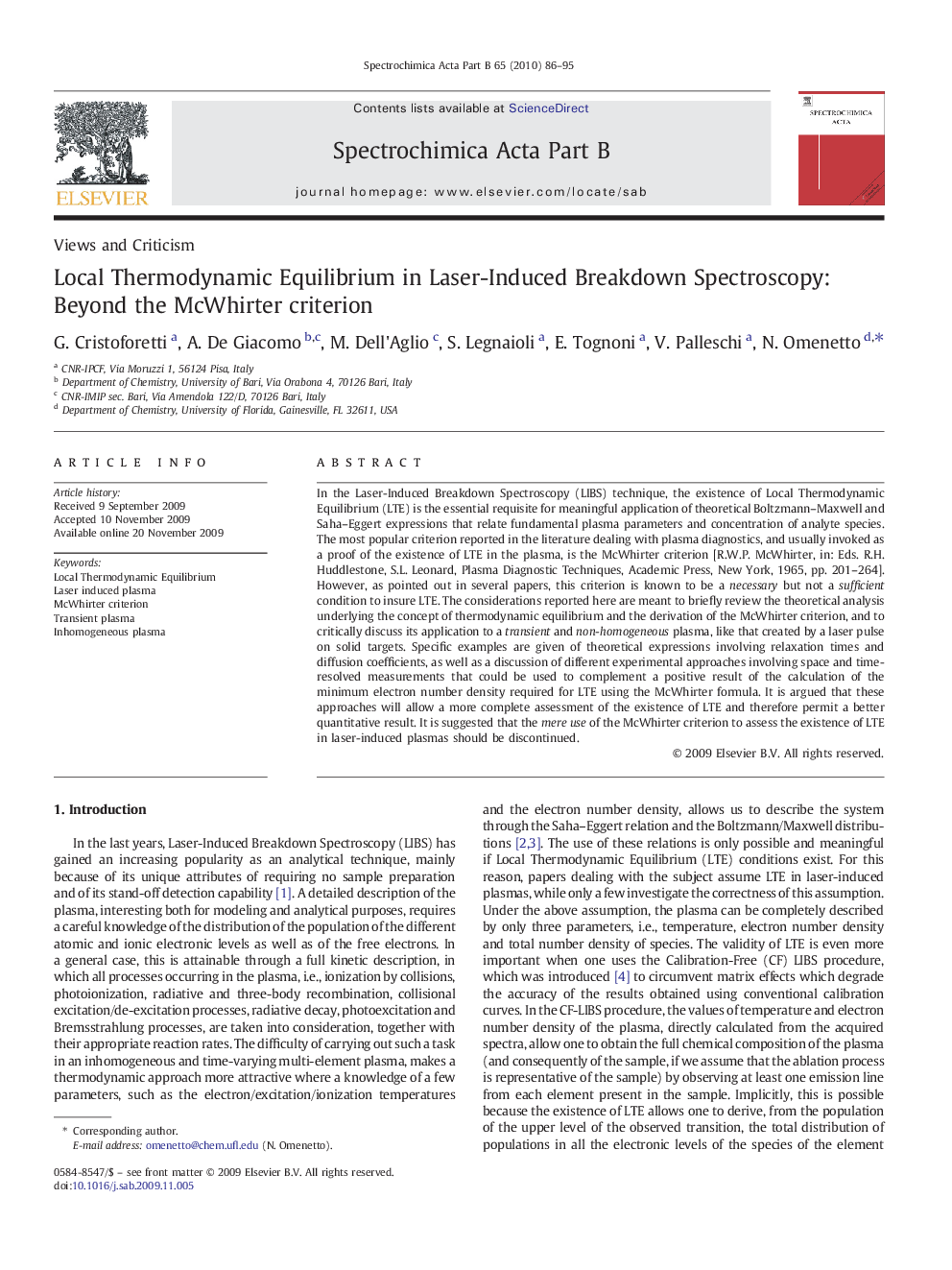| Article ID | Journal | Published Year | Pages | File Type |
|---|---|---|---|---|
| 1240625 | Spectrochimica Acta Part B: Atomic Spectroscopy | 2010 | 10 Pages |
In the Laser-Induced Breakdown Spectroscopy (LIBS) technique, the existence of Local Thermodynamic Equilibrium (LTE) is the essential requisite for meaningful application of theoretical Boltzmann–Maxwell and Saha–Eggert expressions that relate fundamental plasma parameters and concentration of analyte species. The most popular criterion reported in the literature dealing with plasma diagnostics, and usually invoked as a proof of the existence of LTE in the plasma, is the McWhirter criterion [R.W.P. McWhirter, in: Eds. R.H. Huddlestone, S.L. Leonard, Plasma Diagnostic Techniques, Academic Press, New York, 1965, pp. 201–264]. However, as pointed out in several papers, this criterion is known to be a necessary but not a sufficient condition to insure LTE. The considerations reported here are meant to briefly review the theoretical analysis underlying the concept of thermodynamic equilibrium and the derivation of the McWhirter criterion, and to critically discuss its application to a transient and non-homogeneous plasma, like that created by a laser pulse on solid targets. Specific examples are given of theoretical expressions involving relaxation times and diffusion coefficients, as well as a discussion of different experimental approaches involving space and time-resolved measurements that could be used to complement a positive result of the calculation of the minimum electron number density required for LTE using the McWhirter formula. It is argued that these approaches will allow a more complete assessment of the existence of LTE and therefore permit a better quantitative result. It is suggested that the mere use of the McWhirter criterion to assess the existence of LTE in laser-induced plasmas should be discontinued.
